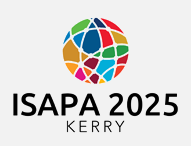Start Date
17-6-2025 3:00 PM
End Date
17-6-2025 4:30 PM
Abstract
In the framework of the state research project (nr. VPP-IZM-Sports-2023/1-0001)
The applicability of EUROFIT of children with different special education needs (SEN) (mild intellectual (ID), visual impairment (VD), physical (PD), hearing disability (HD)). This study aimed to explore the physical fitness level across the four groups of SEN and compare it with typically developing children (CG). Results are based on the fitness measurement data of about 180 children with disability (100 with ID, 15 with VI, 30 with PD, 30 with HD average age: 14.20 SD = 2.27 years, 100 in CG with average age 13.95 (SD = 1.37)). Based on the results, children with SEN demonstrated similar scores to CG in several EUROFIT subtests. The results in aerobic fitness level did not exhibit statistically significant differences among the four subgroups. The ID and VI groups demonstrated similar levels of strength to the control group (CG). The VI subgroup was superior in upper body speed test compared to other groups. The CG outperformed SEN groups in running speed (pConclusions: Children with PD had the lowest fitness level in this study. The most significant differences were found in upper body fitness tests across the groups. However, several factors (e.g., gender, age) may impact the results and will be analyzed in detail during the presentation. The study financed by “Innovations, methodologies and recommendations for the development and management of the sports sector in Latvia” (Nr.VPP-IZM-Sports-2023/1-0001)
Recommended Citation
Klavina, Aija; Galeja, Zinta; Ozols, Edgars; and Ansons, Rihards, "Applicability of Standardized Physical Fitness Test in Schools for Children with Special Education Needs in Latvia" (2025). International Symposium of Adapted Physical Activity and International Symposium on Physical Activity and Visual Impairment and Deafblindness. 56.
https://sword.mtu.ie/isapa/2025/day2/56
Applicability of Standardized Physical Fitness Test in Schools for Children with Special Education Needs in Latvia
In the framework of the state research project (nr. VPP-IZM-Sports-2023/1-0001)
The applicability of EUROFIT of children with different special education needs (SEN) (mild intellectual (ID), visual impairment (VD), physical (PD), hearing disability (HD)). This study aimed to explore the physical fitness level across the four groups of SEN and compare it with typically developing children (CG). Results are based on the fitness measurement data of about 180 children with disability (100 with ID, 15 with VI, 30 with PD, 30 with HD average age: 14.20 SD = 2.27 years, 100 in CG with average age 13.95 (SD = 1.37)). Based on the results, children with SEN demonstrated similar scores to CG in several EUROFIT subtests. The results in aerobic fitness level did not exhibit statistically significant differences among the four subgroups. The ID and VI groups demonstrated similar levels of strength to the control group (CG). The VI subgroup was superior in upper body speed test compared to other groups. The CG outperformed SEN groups in running speed (pConclusions: Children with PD had the lowest fitness level in this study. The most significant differences were found in upper body fitness tests across the groups. However, several factors (e.g., gender, age) may impact the results and will be analyzed in detail during the presentation. The study financed by “Innovations, methodologies and recommendations for the development and management of the sports sector in Latvia” (Nr.VPP-IZM-Sports-2023/1-0001)

